How to Change Your Car's Paint Color

There are many reasons why you might think about changing the color of your car, truck or SUV but there are a huge number of things you need to know and consider before you embark on this course of action. In this article, I'm going to use my 20+ years of experience in the auto business to explain all the pros and cons of respraying or changing the color of a car to help you decide if you really want to go down this route. I'm also going to tell you about some easier and cheaper processes you might want to consider instead.
- 1. First consider whether your car really is worth painting
- 2. Do you know how much it costs to respray a car?
- 3. Why do you want to change your car color?
- 4. Do you know what's involved in painting a car?
- 5. Should you change the car color or respray the same color?
- 6. Laws surrounding changing car colors
- 7. Professional or DIY respray?
- 8. You might need much more than just paint
- 9. Proper preparation is vital
- 10. What about the interior?
- 11. Will changing the color help or hurt your car's value?
- 12. Ways to change your car color without paint
- 13. How long does it take to change your car color?
- 14. Conclusion
First, consider whether your car really is worth painting
There are lots of things you might not like about your car, especially if you've had it for quite a while. You might not like the smell inside the cabin, the material used to cover the seats, your damaged alloy wheels, or a worn steering wheel and gear shifter. All those things and more can be sorted relatively quickly, easily and cheaply, but if you don't like your car's color then changing the color of your car is in another league entirely.
The first thing you have to decide for yourself before you take another step towards getting any car resprayed has to be is it even worth it? It's not just the sheer cost in terms of dollars and cents you need to consider. Changing the color of a car is an incredibly big undertaking that should never be taken on until you're fully aware of what's involved, and by the time you get to the end of this article, you should have a firm grasp of the whole subject.
Just because you have an old car that's not worth much to anyone but you doesn't mean it will be cheaper to paint. In fact, if you have a car worth less than a couple of thousand dollars it will probably cost more to change the color than the car is worth. And trust me; the money you'll spend changing the color of a car like that is money you're never ever going to get back.
Even if you have a reasonably new car that's worth tens of thousands of dollars, do you want to spend the time, money and effort it's going to take if you know it's money you'll never see again? The exception is when you're looking to restore or restomod an old car. You might have found an original 1968 Ford Mustang GT fastback in a barn somewhere that's in really bad shape and you want to bring it back to its former glory. Whether you want to return it to its original red or change it to the classic Steve McQueen Bullitt green doesn't really matter, it's still going to be well worth doing.
Of course, if money is no option and you just want a different color – perhaps one that wasn't even available from the factory – then by all means go ahead. There are unlimited examples of celebrities and top sportspeople buying incredibly expensive rides and immediately sending them to the body shop for a color change, so who are we to question them?
By the way, if you'd like to know about some of the very best products, services and companies I've found for buying, selling, and helping with vehicle ownership then please check out my recommended products and services page right here. As well as telling you where to go to get the very lowest prices on new and used vehicles, I also cover finance, insurance, parts, detailing and other stuff too.

Do you know how much it costs to respray a car?
You might look at the cans of spray paint at the auto shop and think that changing the color of your car wouldn't cost a ton of money, but I promise you that painting a car (properly) is a time-consuming and expensive job. You'd be amazed not just at how expensive the paint itself is, but how much you actually need might come as something of a shock too. Remember, there isn't just the exterior that needs painting because a proper job involves painting the interior, the trunk, under the hood and underneath the car.
And if you are going to have a professional do the entire job from start to finish you also have to factor in the massive costs involved with removing all the interior and exterior trim (EVERYTHING!) and then preparing the bodywork for the new paint job.
Changing the color of a car will cost you anything from a couple of thousand dollars upwards, and when I say upwards, the sky really is the limit. If you are having an average size car painted from bare metal up to a show quality finish in an expensive metallic or pearlescent paint you could easily spend $12,000 or much, much more. And the bigger the vehicle, the more expensive it will be.
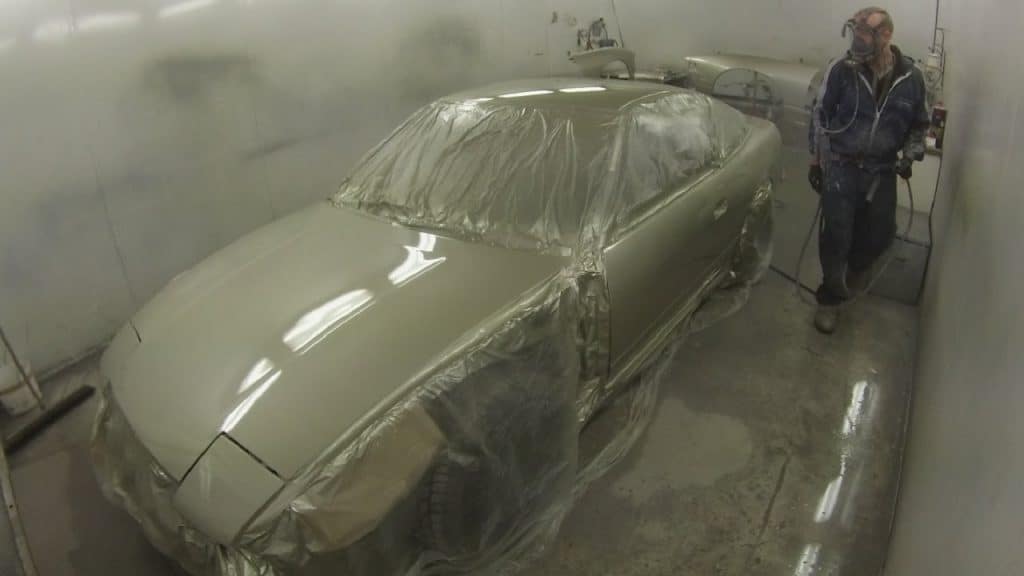
Why do you want to change your car color?
Have you thought deeply and seriously about why you actually want to change the color of your car? Is the current color so offensive to you that you simply can't live with it? And if that is the case, why did you buy a car in that color in the first place? If you bought it with the express intention of changing the color and you couldn't have bought one in a color you like in the first place then that's fair enough. But if you just thought changing the color wouldn't be that big of a deal you really ought to have researched the subject in more depth before buying the car.
If the paint isn't in great shape and needs some work to make it look the way you want it to, you might think you may as well change the color if you're going to have to paint the car anyway. If the current color is something you could live with if it was in better shape then there are much more affordable ways to get your ride looking sweet without going to the time and expense of a respray, and I'll look at those later on.
As I mentioned earlier, restorations and restomods are an entirely different matter and they'll often involve a full paint job so you might as well go for the color you want if you're going to have to do a full respray anyway.
Do you know what's involved in painting a car?
I touched on this earlier, but are you sure you really know what's involved with changing the color of a car? To do the job properly involves a huge amount of time and effort – either by you, a body shop or both – and there's far more to it than most people have any idea about.
You could, if you're not bothered about the quality or the way it will look, just spray a new color over the old one after masking off the lights, grille, windows, etc. However, if you want to do things properly (which you should) then the actual spraying of the new color is only a small part of the whole process.
Every bit of trim has to be removed from the exterior, the glass needs to be removed or masked off perfectly, the entire interior needs removing, the bodywork needs sanding and any damage needs repairing, and then the whole process of applying primer, undercoat, several coats of paint and finally a clear coat needs to be completed. As if all that's not enough, a really professional job might also include finely rubbing down and then polishing the finished paintwork.
Should you change the car color or respray the same color?
If you absolutely have your heart set on an entirely new color for your car and you're prepared to pay the substantial cost, then good for you and go right ahead. On the other hand, if you liked your car enough to buy it in the first place in its current color then shouldn't you stop and think for a moment before you go down the route of a color change?
If the paint is tired and old there are ways to bring it back to life and have it looking like it just came out of the factory for a lot less money than the price it costs to respray a whole car? Several different processes can be employed to transform the exterior paint on a car that are massively cheaper than a respray. After all, keeping the current color and making it look like new doesn't involve removing all the trim inside and out and painting every part of the metal.
Of course, if you do have to respray the car you might as well change the color to one you like more, right? Well, if you are going to go down to the metal and start again then yes, but if you're going to do what I'd call a part-job then you need to think about a few things first. You may be able to get a decent job by painting over the current color, but that's not always a good idea if you have a car worth anything like decent money.
When you come to have a car appraised when you're trading in a dealer won't look kindly on a paint job where there's evidence of the original color on view. The exterior and the visible areas inside the cabin might look fine, but if there are areas in the engine bay or trunk where the original color is still visible then it's going to affect the value.
Respraying the car the same color will avoid those tell-tale signs and help you get a better resale price, but I have to point out that someone who knows their stuff will still be able to tell that you've had a respray, even in the same color.
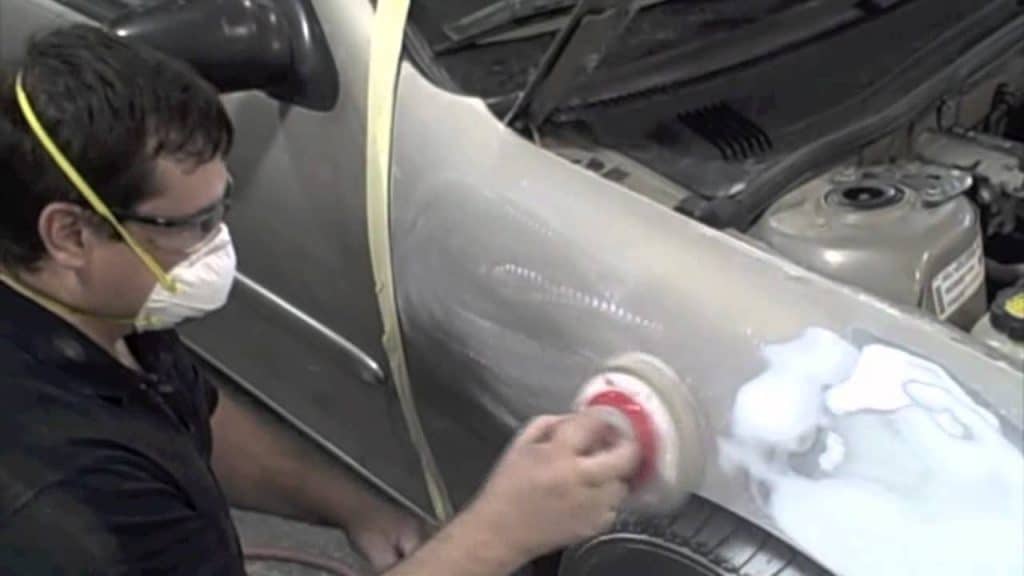
Laws surrounding changing car colors
It probably won't come as a surprise to anyone that different countries have very different laws about notifying the authorities about changing the color of your car, and in America, it also varies from state to state. As a general rule, it's a good idea to inform the DMV if you change the color of your vehicle even if there isn't a state law legislating for it.
You'll probably find there is a reference to the color of your car on its registration papers, although it will probably be referenced as a number rather than written as the exact color. Your registration papers may say the color is 8 or 5 in the color column rather than something as exact as "Plum Crazy" or "Go Mango." Even so, it can only lead to trouble somewhere down the line if a situation arises where you have to produce your documents and your car is now a different color from what it says on the registration document.
You should also inform your insurance company if you change the color of your car. At the very least, your insurance company will probably only be insuring you for the factory paint to be repaired if you make a claim, so you could be left out of pocket if you've changed the color and try to make a claim when you haven't informed your insurer of the color change in advance.
In a worst-case scenario, we all know how insurance companies like to avoid paying out if they can, don't we? Imagine your car has been written off and you're making a claim running into the tens of thousands and the insurance company finds out the car you're claiming for is supposed to be blue but is in fact red and not blue. While some insurers might not be bothered or might adjust the claim down slightly, there are bound to be other companies that will try and refuse the claim completely in those circumstances.
If you do change the color of your car you really should inform the DMV and your insurer just to be on the safe side.
Professional or DIY respray?
I have to admit that the idea of someone respraying their car themself to try and save money sounds like a terrible idea, but of course, there will be some people out there with the equipment, knowledge and ability to paint cars effectively. If you do have the training and experience to be able to do a professional-looking paint job on your car then you have my complete and total admiration, but in most cases, it's a job that's best left to the professionals.
Even if you're capable of doing minor body repairs and respraying a small area to a decent level, changing the color of a car with a full respray is something else completely. Doing your own minor repairs and paint is extremely rewarding and it can save you a ton of money if you do it properly, but you do need the right training and equipment.
There's a comprehensive course available that I've found here that can take you from being a complete novice to an almost professional level of auto body and paint repair. Even if you only ever do one relatively small repair with what you learn from the course it will more than pay for itself, but you could find you really take to it and end up fixing all your own dents, dings, scrapes, scuffs and scratches for years to come. Who knows? You might even end up doing jobs for others and making it a bit of a side-hustle, or even a new career could be in the offing!

Around the town where I live there's a guy with an old BMW 3 Series that he's obviously changed the color of himself. However, he's obviously a fan of The Walking Dead or the wider zombie movie genre because he's pained his car matt black and painted things like "Zombie Apocalypse Bug-Out Vehicle" all over it. Now that's the kind of car color change just about anyone could do themself, although I'd love to be a fly on the wall when he tries to trade it in one day.
You might need much more than just paint
Most people have no idea about how much is involved in painting a car, and if the car is more than a few years old it could need a lot more than just some new paint to produce a professional finish. You only have to watch a few episodes of those car repair or customization shows like Fast N Loud to know a lot of unpleasantness and grief could be revealed when you start to respray an old car.
Paint can sometimes be used to hide a multitude of sins, and if you start to remove the existing paint to change the color of a car you could find rust, filler, or dents and scratches in the metal that have been covered up by layers of paint. If you're going to respray a car to even an acceptable level for most people, all of those imperfections will need attending to and that can get time-consuming and very costly.
Proper preparation is vital
The actual spraying on of new paint and clear coat is only a small part of changing the color of a car, and to get a truly professional finish requires an immense amount of preparation before you can even think about applying new paint.
Exactly how much preparation is required will depend on several things such as whether you are painting over the existing paint or removing it completely to do a proper job of the highest quality. Either way, there will be an awful lot of rubbing, sanding and degreasing to be done before you even think about seeing new paint applied and who knows how many coats need to be applied before you can consider the job finished. And that's before we even discuss removing brightwork, mechanicals and other components!
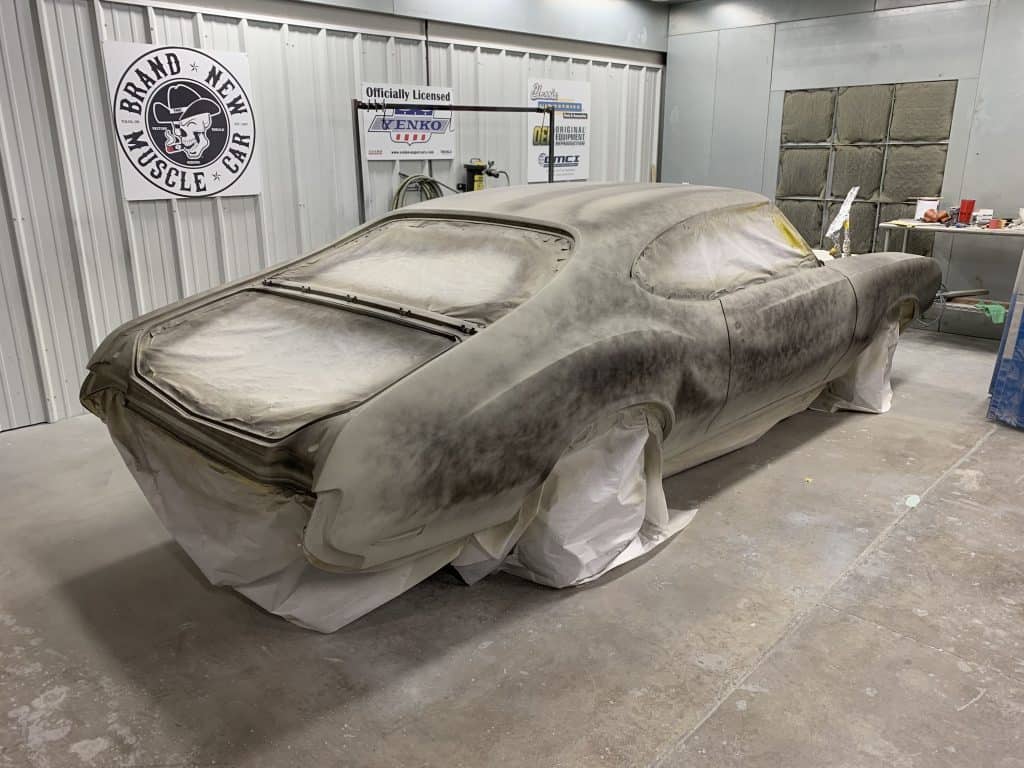
If you neglect the preparation, even the most skilled painter will be unable to get anything close to a showroom finish with your exciting new car color. On the other hand, this whole preparation thing also presents opportunities.
Even if you're going to be entrusting a professional to do the painting you can save yourself a great deal of money by doing some of the prep work yourself. Once again, if you check out the LABAP course it will provide you with all the training and information you need to learn how to prep a car for paint that could easily save you hundreds if not thousands of dollars, depending on how much of the prep you decide to do yourself.

What about the interior?
Most of what I've covered so far has related to the exterior of the car, although I have mentioned the fact that things like carpets, seats, door cards and the dash will have to be removed to do a full-blown professional color-change of your car. After all, you wouldn't want to have a shiny new blue exterior color but leave the old red color on the inside, would you?
This brings us to another thing you need to consider about changing the color of your car, which is will your new color match the current interior or will you have to change that too? I'm not talking about the metal on the inside because I'm assuming you're going to have that done as part of the respray. What I'm talking about are all those bits you're taking out so you can have the metal painted.
If your car has a black interior you're probably going to be just fine whatever color you choose to paint the body. However, some cars can have some pretty funky-colored interiors that might work well with the original color but might look absolutely hideous with your chosen new color. Let's say the car's original color was green and the seats, carpets and door cards are all green too but you're changing the color of the car to orange or red? If you like the idea of that sort of color combination then good for you, but I'd like to be that fly on the wall again when you try to sell that car in that kind of color combination somewhere down the line.
If you find you're going to have to change the interior as well you might be able to find an old interior from a breaker's yard in a color that will go with your new color for a reasonable amount of money. If that's not possible, you might be able to buy a new interior or get the old one recovered. Some leather and vinyl seats and other surfaces can be painted but these are specialist processes that are not going to come cheap, although they would work out cheaper than buying a brand new interior, of course.
Will changing the color help or hurt your car's value?
A fabulous new paint job could add thousands to the value of an old car, although it will depend on the car as to whether it's going to be worth enough in the end to justify the expense of a color change. Having your car's paint in top condition will usually enhance its value, even if the amount the car is worth in the end still isn't as much as the color change actually cost you.
However, the actual color you choose can play a massive part in the resale value of the car, and not always in a good way. There are plenty of colors you rarely go wrong with, such as white, gray, black and silver. Unfortunately, those are not the types of colors people generally choose when it comes to a color change. After all, unless we're talking about a really rare or special vehicle it would probably be easy to find one in the color you want to start with if we're talking about white, gray, black or silver.
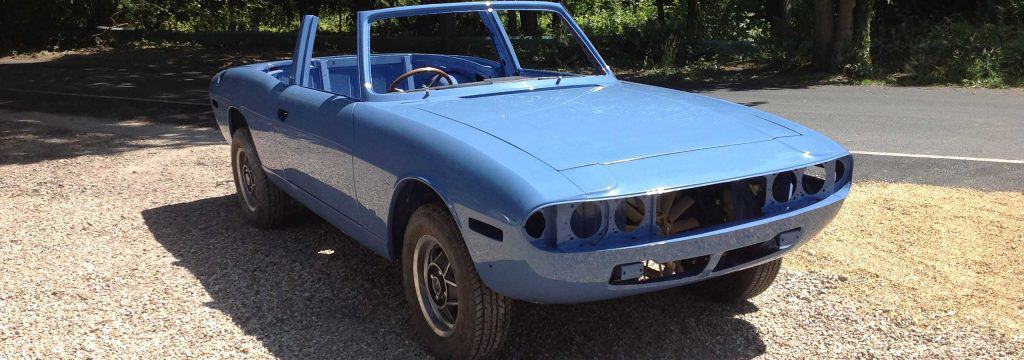
People who change the color of a car will often go for brighter colors like lime green, yellow, orange or purple. This is understandable as most cars are not offered in those sorts of colors from the factory, but just because you like it doesn't mean everyone (or anyone) else will.
Some cars look great in these bright colors. It's hard to fault a Dodge Challenger or a Lamborghini Huracan in one of those shades, but would many people be interested in a Canary Yellow or Metallic Lime Green Escalade? Yes, I know there will be someone, somewhere who'll be reading this saying "I would," but good luck finding that one person in a country of 330 million when you want to sell a Yellow Escalade!
Ways to change your car color without paint
There are a couple of ways you can change the color of your car without going to the extremes of repainting it, although one of them isn't exactly changing the color in terms of going from something like red to black.
If a car's paint has faded over the years it could be almost unrecognizable from the color it looked when it first rolled off the production line. A car that was a brilliant red when it was first painted could now look almost like a dull pink after decades in the California, Nevada or Arizona sun, and there are ways that dull pink hue can be brought back to its brilliant, sparkling red with some polishing techniques.
Whether this can be done to your car will depend on the thickness of the paint on the car to start with as these processes involve rubbing away the surface layers and then re-polishing. The professionals who practice this incredible art have non-invasive tools that can tell them exactly how much paint there is on your car so they can say whether the process is suitable for you or not. Of course, you can't polish a red car to be green or a black car to be white, so these processes cannot bring about a genuine change of color.
There is another process that can go much, much further than a simple color change and it doesn't involve any paint so it's also completely reversible if you ever want to go back to the original color, and that process is vinyl wrapping.
With a vinyl wrap, you can absolutely any color you can imagine right up to and including a chrome mirror look. You can go even further with any complex graphics in any number of colors you can think of, so the only limitation on what you can do with the look of your car will depend on your imagination and your budget.

Even though a vinyl wrap can be removed, please keep in mind that removing a vinyl wrap could still leave a lot of work to be done to the original paint to get it looking good after being covered in an adhesive for some length of time. If you try to sell an expensive car with a vinyl wrap, a dealer may hit you hard with a low valuation to take account for the unknown of what may be beneath the wrap when they get around to removing it. Just as paint can be used to cover a multitude of sins, so can a vinyl wrap to some extent.
Don't be fooled into thinking a vinyl wrap is a cheap way of changing the color of your car though. I used to think that until I started looking into it, and I promise you, it isn't. The designing of a graphic or the vinyl itself isn't massively expensive, but applying it to the car is a skilled, time-consuming job that needs a professional to get the desired result.
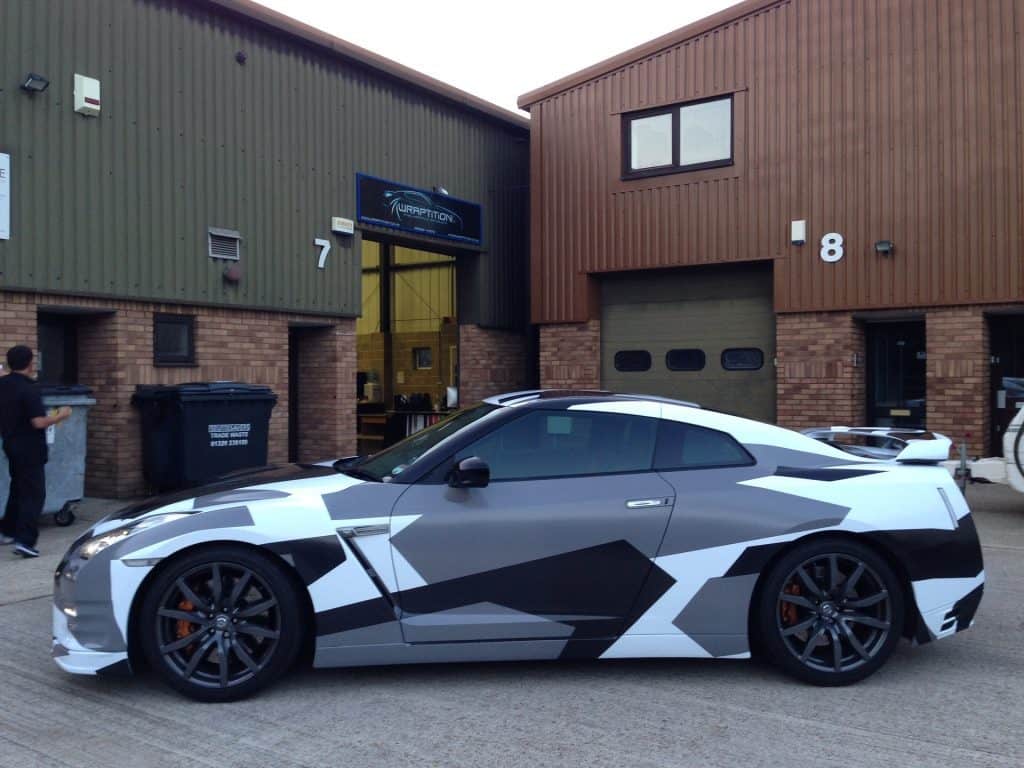
Trust me, I've had to apply simple vinyl lettering such as "Low Rate Finance Available" to cars in showrooms before, and getting those straight and without creases or bubbles is tough enough. Applying a full wrap to the entire bodywork of a car is a job I wouldn't want to even think about attempting, which is why even a reasonable simple wrap can still run to thousands of dollars.

How long does it take to change your car color?
Even applying a vinyl wrap can take a team of trained professionals a couple of days, and a conventional full-color change with a respray can take weeks. To begin with, all the bits that are not going to be painted need to be removed, then there's any bodywork preparation, then there could be layers of primer and undercoat to be applied.
After that, there will be several layers of paint at least, and then you'll probably have the clear coat to be applied before you start on all the finishing touches of rubbing down, polishing and then refitting all the stuff you took off and out of the car to begin with. Oh, and don't forget the time each layer being applied needs to dry properly before the next layer is put down.
Even a relatively straightforward car color change will take a couple of weeks, but it could take considerably longer. If you can do without your car for that amount of time then fair enough, but don't say you weren't warned. And by the way, when was the last time you hired a contractor to do a job for you and they started and finished exactly when they said they would? I'm just saying…….
Conclusion
I didn't set out writing this article with the intention of putting you off changing your car color, but I did set out intending to make anyone thinking of changing the color of their car fully aware of just what's involved and what they will be letting themselves in for. I suppose if I was to offer one piece of advice from my extensive experience of the auto business it would be to pay attention to the color of a car before you buy it in the first place.
I once had an early used Range Rover Sport for sale in my dealership in a color called Lugano Teal, which I knew would be a hard sell. To my surprise, we soon had a police officer wanting to buy it on a four-year balloon finance deal to keep the monthly payments manageable.
A couple of weeks after he drove it away he came back wanting to swap it for something else because his wife couldn't stand the color and refused to ride in it. If you have any knowledge of auto finance and the difference between retail and trade prices of used vehicles you'll know exactly what I mean when I say he was seriously upside down on the deal and simply couldn't come up with the money it would take to get him out of that car.
After that, I always made a big deal of talking to customers about the potential downfalls of unusual colors if they were considering buying that sort of thing. As long as I made them fully aware, my conscience was clear when they came back in a year or two and found the trade-in value of their car was considerably lower than an identical model in black.
By the way, to learn more about how much the color of your car matters you might want to check out other articles I've written on the subject such as "This is why the Color of Your Car Matters," "Do Luxury Cars Have Better Paint" and "What Paint Colors are Best for Hot Weather."

How to Change Your Car's Paint Color
Source: https://carbuyingandselling.com/everything-you-need-to-know-before-changing-your-car-color/